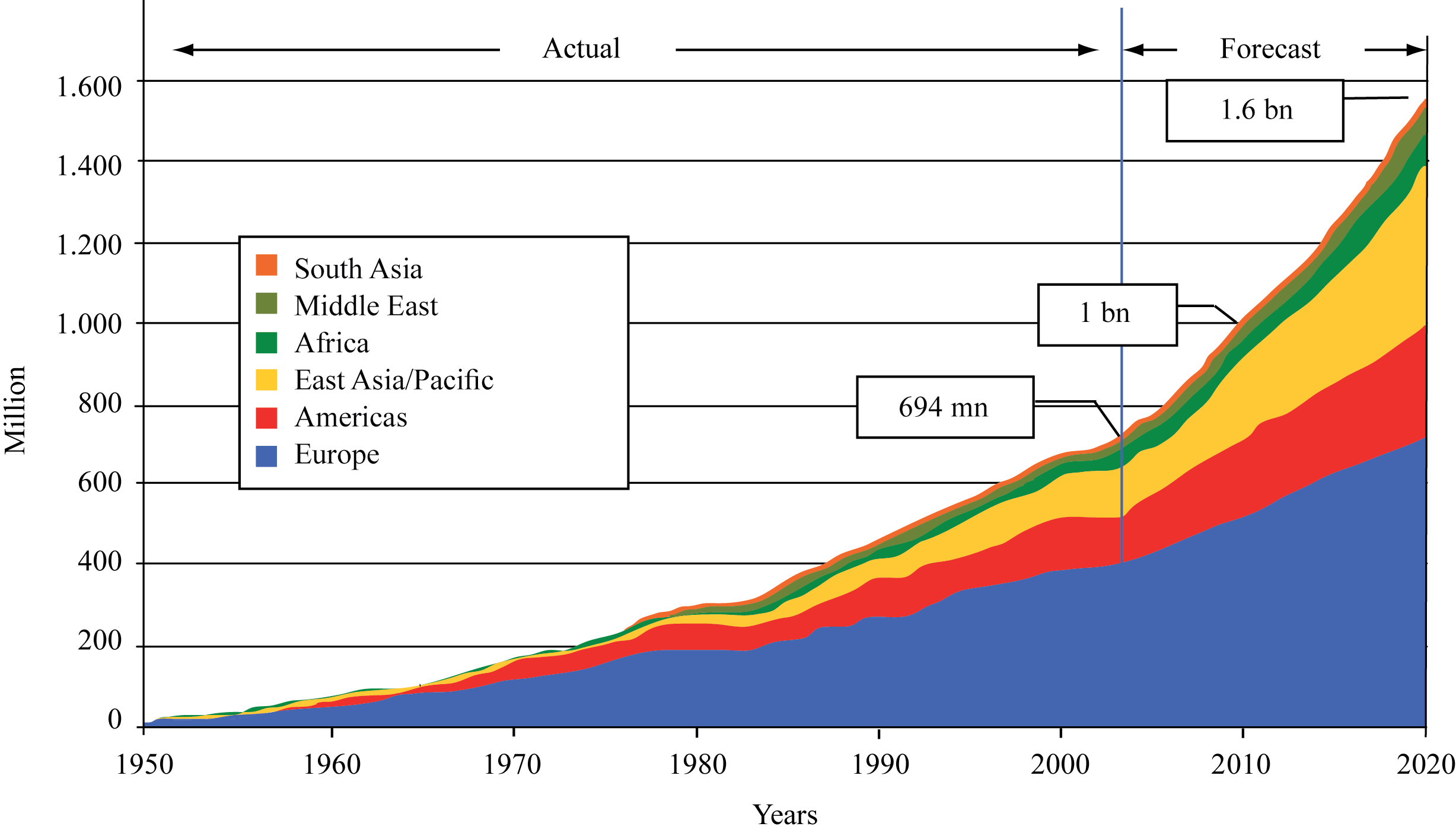| Date | Marks available | 1 | Reference code | .2.bp.10 | |
| Level | SL and HL | Paper | 2 | Time zone | |
| Command term | State | Question number | 10 | Adapted from | N/A |
Question
The graph shows the number of international tourist arrivals between 1950–2020.

[Source: ©UNWTO, 9284404708]
State the year in which international tourist arrivals in Europe exceeded 400 million for the first time.
Describe the trend in international tourist arrivals in the East Asia/Pacific region shown on the graph.
Suggest three possible reasons for a decline in the total number of international arrivals in the world.
Referring to one or more named examples, examine why some countries have invested in tourism in order to promote development.
Markscheme
Award 1 mark for any year between 2002–2006 inclusive.
Tourism to the East Asia/Pacific region has risen rapidly and is expected to continue rising [1 mark]. Award 1 mark for either the date tourism began (about 1970) or for noting any fluctuation in the trend. Award 1 mark for any quantification.
Award 2 marks each for identification of three reasons.
Possible answers include:
- political instability
- relative cost of travel (such as fuel)
- world recession
- pandemics
- terrorism.
Accept other valid reasons.
Candidates would be expected to identify the potential benefits of tourism for either LEDCs or MEDCs, or both. Answers might show an understanding of the growth of the global tourist industry in the last 50 years and the opportunities this presents for economic development. More specifically, an explanation might cover increased access to foreign capital (and its importance in the global economy), development of infrastructure, employment opportunities, reduction of poverty, exploiting cultural and heritage tourism opportunities, and consequent multiplier effect, potential training, transfer of skills and exposure to foreign management methods. Candidates are expected to show an understanding of the role of tourism in the promotion of economic development and as such could make reference to potential impacts on relevant development indicators. At least one named example is a requirement and is expected in those answers accessing band D or above.
Marks should be allocated according to the markbands.

